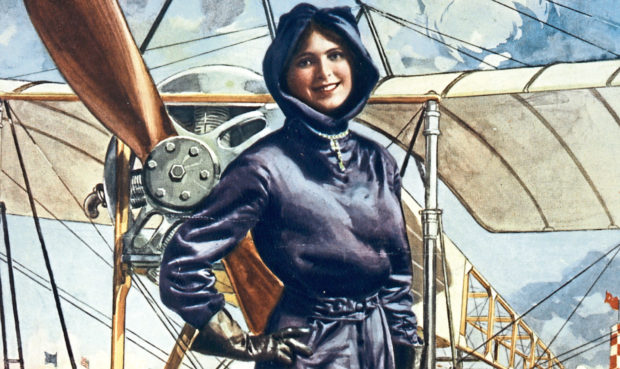
As her aircraft hurtled along the runway on a clear, crisp April morning, history weighed heavily on Harriet Quimby’s shoulders.
The daring aviator was attempting to become the first woman to fly across the English Channel, following in the jet stream of engineer Louis Blériot, who had achieved the record-breaking feat three years before her in 1909.
As only the second woman in the world to become an officially licensed pilot, Quimby was no stranger to treading new ground – or air.
Working as a reporter for Leslie’s Illustrated Weekly in New York, she interviewed a top flying instructor for a feature about the Big Apple’s jet set.
The subject of air travel fascinated Harriet so much that she asked him to teach her to fly and, in May 1911, she became the first woman to begin flight training. Quimby proved a natural and earned her licence that August.
As the US’s first female aviator, Quimby was keen to capitalise on her distinguished status. She took to wearing colourful, feminine outfits, joined an exhibition team, and earned $1,000 per flight.
She continued to write about her airborne exploits for Leslie’s. Her articles were a sensation and she quickly became a star of the skies.
In 1912, she travelled to Britain and convinced the Daily Mirror to fund her attempt to fly across the English Channel in exchange for exclusive coverage.
The flight was soon scheduled for the early hours of April 16, when Quimby reversed her French predecessor’s route by taking off from Dover and aiming for Calais.
While she enjoyed a clear take-off, Quimby was faced with dense fog as she climbed 1,500ft in 30 seconds. The poor visibility meant she had only her compass as a guide during the 25-mile flight across the Channel. But in just under an hour, she successfully touched down on a beach 25 miles from Calais.
Such a historic achievement would ordinarily guarantee significant front-page press coverage but the crossing was overshadowed over the following days by the sinking of the Titanic.
On her return to the States, Quimby became known as “America’s First Lady of the Air” but the fame honeymoon sadly and tragically wouldn’t last long.
Flying over Boston Harbour in an exhibition flight, only 10 weeks after her Channel crossing, Quimby’s plane suddenly lurched.
The gathered crowd watched in horror as the 37-year-old pilot and her passenger fell 500 feet to their deaths – just 11 months after Quimby had first took to the skies.

Enjoy the convenience of having The Sunday Post delivered as a digital ePaper straight to your smartphone, tablet or computer.
Subscribe for only £5.49 a month and enjoy all the benefits of the printed paper as a digital replica.
Subscribe